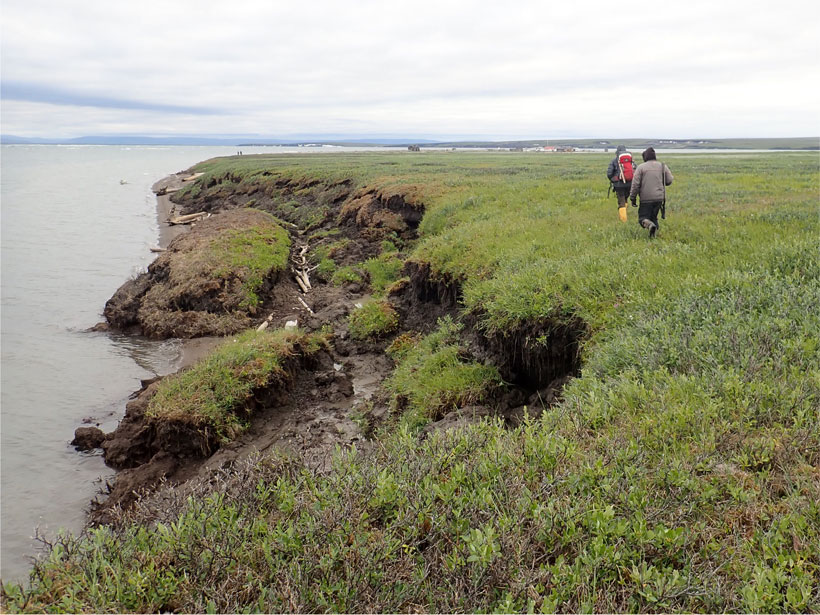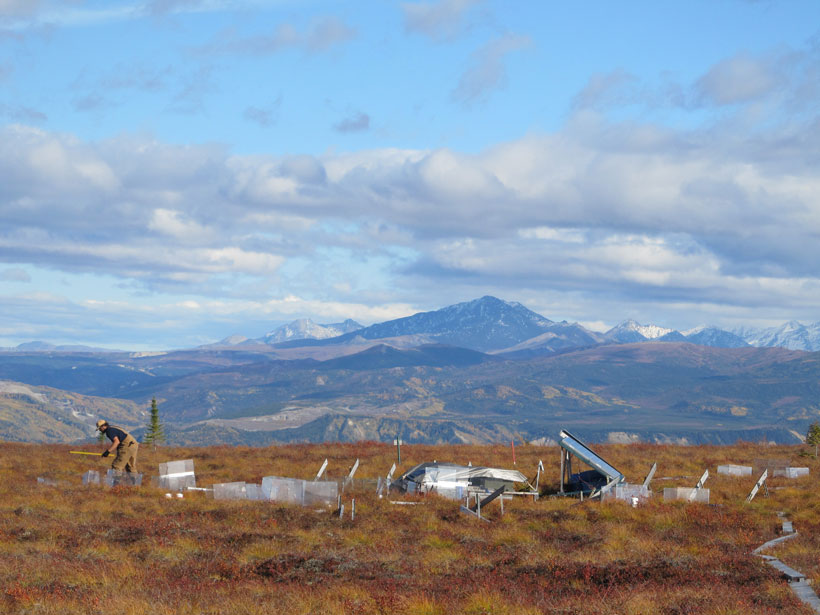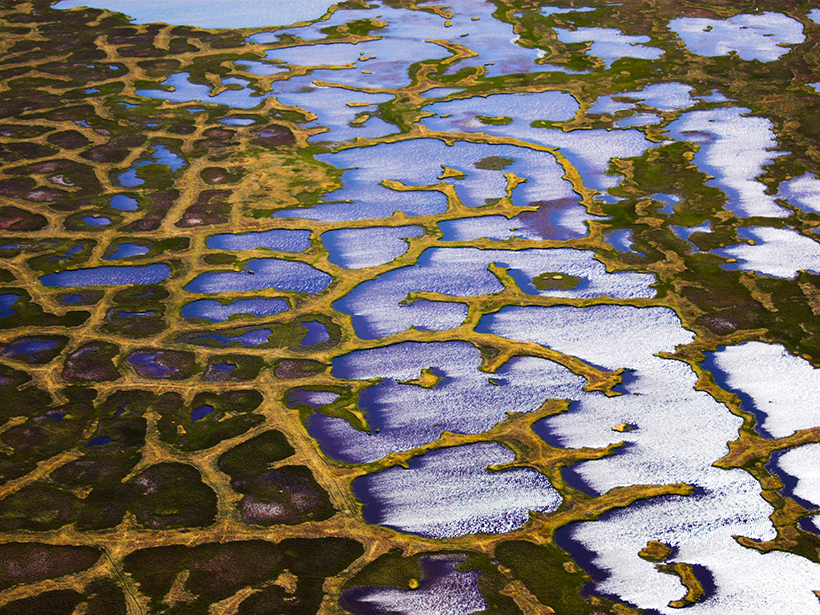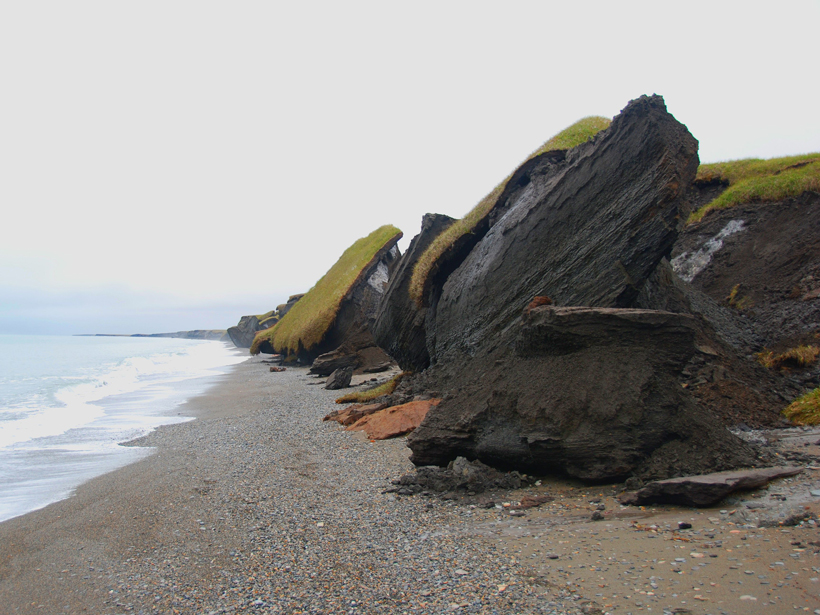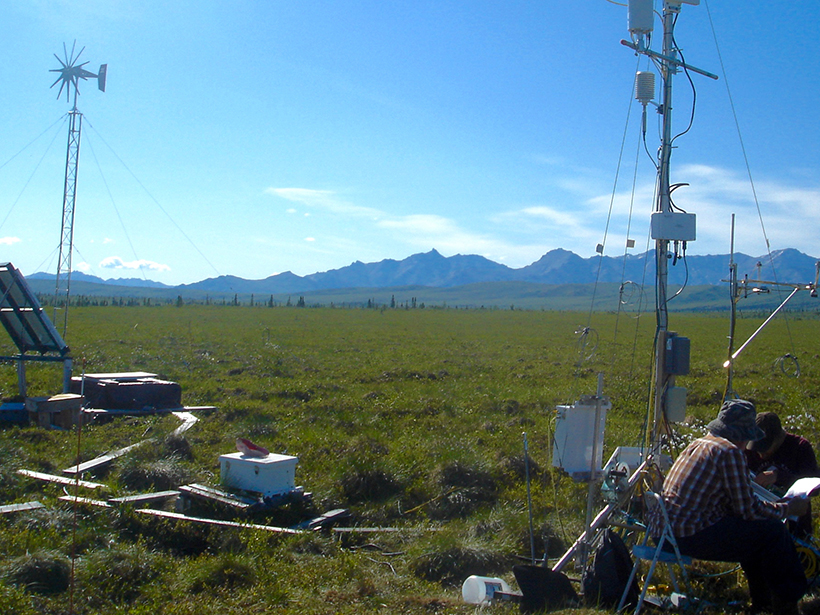New research examines how shifts in aboveground ecology influence belowground hydrology in the Arctic.
permafrost
Reindeer Could Trample Permafrost Thaw
Thick, fluffy snow traps summer’s heat in the top layers of Arctic permafrost even as winter chills the air above. Grazing animals stomp that snow flat.
Where Does the Carbon Go When Permafrost Coasts Erode?
Arctic coastlines have not been considered carefully in carbon cycles for long, but new research suggests that eroding permafrost may emit more greenhouse gases than previously thought.
Permafrost Thaws Rapidly as Arctic River Flooding Increases
As climate warms, Arctic rivers carry higher flows and flood earlier in the spring, causing underlying permafrost to thaw rapidly.
The Permafrost Listeners
Geophysicists have discovered a way to monitor permafrost thaw by measuring seismic waves so gentle they don’t shake a thing.
How Nitrogen Contributes to Permafrost Carbon Dynamics
Nitrogen released into the soil from thawing permafrost in the Arctic could accelerate soil carbon decomposition and alter carbon dynamics, with global implications.
A Modeling Toolbox for Permafrost Landscapes
A new resource makes it easier for researchers to explore predictions of how melting permafrost might affect carbon release, wetlands, and river deltas as they evolve and other interacting effects.
A Deeper Understanding of Carbon Decomposition in Arctic Soils
Physical parameters may help scientists extrapolate Arctic carbon soil losses from the local to the regional scale, according to the results of a yearlong incubation experiment.
Carbon Release from Permafrost Erosion Along the Yukon Coast
New findings highlight the need to account for large amounts of ground ice contained in frozen soil when assessing Arctic carbon cycling.
Understanding High-Latitude Methane in a Warming Climate
Climate change could spur greenhouse gas release from the Arctic. A new project will synthesize existing data to improve uncertain predictions.



